The role of women in shaping the fabric of Iranian society, particularly through the avenues of education (both self-education and official education) and civic engagement, stands as a compelling narrative of resilience, change, and identity formation. We’re set to explore the impact of education on Iranian women’s religious and civic selves, while also mapping the broader shifts in activism within Iran and the broader Middle East—a satellite image of social change, if you will. Through oral histories, detailed interviews, and a tapestry of academic and multimedia sources, this project seeks to offer a nuanced understanding of the intersections between gender, education, and social activism in Iran.
Important political events and upheavals are intricate, demonstrating and intensifying the effects of these societal characteristics. Gaining background knowledge is beneficial for acquiring perspective on these issues. Moghadam (2004) explains that the journey from 1979 onward has been anything but smooth for Iranian women. Initially, they emerged as “the major losers of the Revolution” (p.1), witnessing their legal rights and social standing plummet under the banner of religious revival. Before the revolution, in the 1960s and 70s, the increasing presence and active participation of urban women in society had raised concerns among clerics and bourgeois men. They worried that these women, influenced by Western ideologies, were jeopardizing Islamic values, eroding cultural norms, and undermining family structures. This led to calls for women to revert to traditional domestic roles. With the revolution and the establishment of the Islamic Republic of Iran, there was a concerted effort to reshape societal norms, with mandatory veiling becoming a prominent feature. During the first decade of the Islamic Republic, several gender policies were implemented, including mandatory veiling, economic marginalization, the prohibition of female singers, exclusion from political power, and the reinstatement of unilateral divorce, polygamy, and temporary marriages.
The veiled woman emerged as a powerful symbol of the nation’s moral and cultural transformation. The revolution’s success was closely linked to women’s public presentation, a responsibility that polarized women—some embraced it, while others found it burdensome. Despite Ayatollah Khomeini having female supporters, the early leadership of the Islamic Republic, dominated by clerics, notably lacked women in significant or visible roles. The regime was as “masculine” (p.2) in its style as it was in its composition, overwhelmingly populated by Islamic clerics.
Since the 1979 revolution, the number of women in public roles in the Islamic Republic has decreased. For example, while there were 22 women sitting in parliament in 1978 on the eve of the revolution, this number went down to 13 in 2004—the highest number since the establishment of the Islamic Republic until 2012. In the education sector, the environment appears slightly more open to women, particularly in the student body. 65 percent of university graduates were female in 2010, while tenured professors are still predominantly male. The overall picture is one of incomplete but wide-ranging marginalization, where the levers of power remain almost exclusively under male control. (Esfandiari, 2012)
Now that we have an image of the ongoing process that has been shaping Iran’s contemporary gender identity landscape, let’s return to the research I was conducting. My main question was: In what ways have Iranian women engaged with and shaped the education system to reflect their identity and aspirations? To create this satellite image, I started by collecting literature to map these three topics against historical turning points in Iran. I employed a diverse range of sources across various mediums, since these sources were not only selected for their relevance to the research theme, but also for their effective storytelling methods. An interesting one worth mentioning would be Harvard’s Iranian Oral History Project, also as a reminder of the importance of collecting and preserving oral history.
I planned to conduct interviews using a narrative method to give the interviewees a sense of agency and to possibly reveal hidden threads. I divided the questions into three categories: gender, education, and social activism, with 20 optional questions in each section. The flexibility of this method allowed the interviewees to guide the conversation based on their stories, and in this way, I had the ability to stay faithful to the qualitative nature of my methodology – oral history. It is important to note that during the interviews and my readings, my focus shifted more toward the impact of self-education alongside formal education. This shift led me to explore an important question of my own life: how did I learn what I was compelled not to learn by the official education system?
I decided to focus my introductory interview on one question: Who influenced you the most when you were young, or, in other words: who was your role model? To eliminate the impact of the internet and trace social movements without the complication of social media technology, I chose to interview educated women aged 60 to 80. These women were teenagers or adults during the Islamic Revolution in 1979, they also witnessed the Woman Life Freedom movement, a significant movement that emerged in response to systemic gender inequality, repression, and human rights violations that shook the Islamic Republic in 2022 and early 2023. It was crucial for me to touch on the political aspects of education indirectly. I also decided to do short introductory interviews with the relatives of my interviewees so that I would be able to examine the authenticity of our exchanges and make the process more efficient.
During the interviews, I noticed two significant points. Firstly, two of my interviewees identified their fathers as their role models, pointing out the central role their fathers played in their lives. Secondly, these women, active in education or highly educated, often adopted masculine characteristics to harness power and/or denied gender-based discrimination, apparently believing that admitting to it would make them vulnerable. This led me to explore fundamental gender studies by Judith Butler, Brendan Gough, and Angela McRobbie on the performative aspects of gender and contemporary masculinities. I aimed to understand the separation of gender identity and physiological sex and how societal frameworks and power structures can create a double standard. Since the gender scholars I referred to at this stage of my research are largely from English-speaking backgrounds, it’s important to recognize that their findings likely pertain to a specific context: when they identify the adoption of masculine traits as a common strategy used by ambitious women in patriarchal societies, they are observing their own societies. This meant that investigating how my findings would compare with those from other contexts would be valuable. Would there be any differences in women’s behavior across various settings, and how would the dynamics of a religious state and a strictly patriarchal regime influence these behaviors?
When talking about the importance of contextualizing the topic of my research within a religious state, one subject is particularly noteworthy. The rise of “Islamist women activists” (Charrad,1995) was observed in various countries, with Iran being a prominent example. Tohidi’s analysis, mentioned in Charrad (1995), highlights the development of an “Islamic model of womanhood” in Iran both post-revolution and pre-revolution. In the 1960s and 1970s, there was a growing Islamic revivalist movement in Iran, reacting against Westernization and modernization policies imposed by the Shah. This model emerged as a response to a perceived identity crisis experienced by young women from the traditional middle class, who felt disconnected from the Shah’s modernization policies. Initially, the role of the Islamist woman activist provided a framework for public engagement, offering behavioral guidelines during a time of cultural uncertainty. After the revolution, the new Islamic government introduced laws and policies that significantly affected women’s rights and roles in society. Islamist women activists, who had been instrumental in the revolution, began advocating for women’s rights within an Islamic framework. Although the model of Islamist woman activists was first shaped by educated reformist women seeking to assert an Islamic identity distinct from Western influences, this shift led to a more fundamentalist interpretation appropriated by the male clergy, incorporating the model into the official political narrative of the Islamic Republic of Iran.
What did that mean for my interviews being young adults, shaping their identity, at the time? Were my interviewees adopting masculine traits because they saw them as signs of power and assertiveness? One interviewee, a 60 years old gifted woman who studied computer science in the 1970s and worked in tech in both Iran and America, responded to my question about instances of gaining power from her feminine side instead of her masculinity by saying, “My father always told me being manly is not about gender.” The level of denial in her attempt to stay strong, in control, and assertive seemed evident. When I asked about her experiences of discrimination as a woman, she claimed that she believed “Discrimination comes from within.” meaning that it could only happen to those who allowed it to happen to themselves.
Another interviewee, an 81-year-old retired teacher who had worked before and after the 1979 revolution was in absolute denial of gender discrimination, despite her father sending her brothers abroad for education while she was not allowed the same opportunity. When I asked if her father treated his sons and daughters differently, she paused for five seconds before denying it, and I got the same response even after I rephrased the question. I observed a similar pattern of siding with masculine traits early on. When I inquired about her teaching experience, she initially mentioned teaching boys before switching to girls in elementary school. When I asked her to compare these experiences, she remarked that the boys were more “pleasant”. However, when I questioned her about their educational performance—which should have been her primary concern—she noted that “the girls were more hardworking with better performance, but the boys were…” After a lengthy pause, and as she searched for a suitable term, I interjected with a touch of sarcasm, suggesting “more clever.” She responded with a confirmatory “yes! Smarter.”
A personal experience of mine catalyzed my awareness of this coping mechanism within the performance of identity. As an Iranian woman belonging to the generation of my interviewees’ granddaughters, I recalled a significant personal experience from when I was a teenager. I noticed that my body language and tone changed when I was with my male friends, at a café for example – it seemed as though I subconsciously wanted to seem more assertive and in control, which I apparently felt unable to access through my feminine side.
Getting back to my original question: In what ways have Iranian women engaged with and shaped the education system (self-education and official education) to reflect their identity and aspirations? Looking back at our interviews I find myself reflecting my interviewees’ sense of identity, wondering where it comes from and what are the larger implications of it. Is this internalized oppression? Why is it more acceptable for women to become masculine while feminine men create discomfort? Is it acceptable for women to adopt masculine traits for societal comfort? Moreover, why is it more normalized for heterosexual women to be masculine while the same is problematic for homosexual women? Are we turning masculinity into a power characteristic, further separating it from gender? To what extent does viewing masculinity as a source of power cause damage? What does this mean within the patriarchal power structures built over centuries?
When trying to contemplate some of these questions about adopted masculinity as a possible survival strategy for women, I focus more on the social aspects and the results of these characteristics rather than on why and how masculinity and femininity are shaped and defined, since focusing on the latter aspect of these questions can lead us dangerously close to sociobiology—a field I am not well-equipped to address. From this point of view, such traits might be justified through concepts like the inherent risk of death for women in the reproduction process, a risk that does not exist for men.
• Is this internalized oppression?
To navigate the probable response about internalized oppression, we must first clarify the meaning of it. Internalized oppression occurs when individuals from marginalized groups internalize the oppressive attitudes and beliefs imposed on them by the dominant culture. This often involves accepting stereotypes and limitations on one’s social role or identity as “normal” or “deserved”. In order to draw a conclusion that is more than anecdotal I need a larger number of interviews, but from what I have seen in the two mentioned cases the responses of my interviewees were consistent with internalized oppression.
• Why is it more acceptable for women to become masculine while feminine men create discomfort?
Responding to this question relies on a proper understanding of how we define masculinity and femininity as separate from biological sex. By the 1980s, a widely shared consensus in the social sciences had been established that described gender as a social construct acting as a regulatory tool to control and organize (Butler, 1988). In this paradigm, gender roles work as frameworks that individuals use to gain acceptance and navigate societal norms, serving as a “strategy of survival” (Page.522). These roles, known as masculinity and femininity, aren’t necessarily connected to physiological attributes, i.e. the biological sex of an individual. Instead, they are cultivated by societal norms upholding traditional roles in place. This definition can also assist us in navigating how gender can be utilized when necessary. As for the reason for choosing masculinity over femininity, Gough (2018) explains that conventional masculinity is often characterized by a collection of standards that prioritize qualities such as power, achievement, resilience, and self-reliance while discouraging any behavior considered feminine. These norms, categorized by Brannon (1976, cited in Gough, 2018), included avoiding feminine associations (“No Sissy Stuff”), striving for success and power (“Be a Big Wheel”), embodying toughness and self-reliance (“Be a Sturdy Oak”), and embracing risk and aggression (“Give ’em Hell”). Historically, these traits were upheld as societal ideals because they aligned with roles traditionally assigned to men as providers and protectors, and were seen as pathways to earn respect, authority, and social approval.
• Are we turning masculinity into a power characteristic, further separating it from gender? To what extent does viewing masculinity as a source of power cause damage?
Ouzgane (1997) uses the example of the famous Moroccan writer and poet, Ben Jelloun, to analyse these dynamics in literature. In Jelloun’s narratives, masculinity is often reduced to virility, reflecting broader gender dynamics within Islamic cultures in North Africa. He shows a few examples of women adopting (or being forced to adopt) masculine traits primarily as a survival strategy within patriarchal structures. In narratives like The Sand Child and The Sacred Night, female characters are raised as males to provide societal comfort and fulfill family expectations. Ouzgane’s (1997) analysis highlights, “In The Sacred Night, the father’s decision to alter the course of Zahra’s life, to bring her up as a male, can be read as another sacrifice—a symbolic burial of the female.” (p.6) Indeed, my interviewee’s role model, her father, stated it the best, “being manly is not about gender”. This aligns with the societal comfort gained at the cost of personal identity and freedom, questioning the acceptability and ethical implications of such societal norms. He further suggests that equating masculinity with power can lead to harmful behaviors and societal norms that validate aggression and suppression promoting violence. This is evident in characters who feel compelled to continuously prove their masculinity through dominance and violence. He notes, “they inevitably reduce masculinity to virility, a fragile attribute sustained only through repeated acts of violence.” (p.2)
On a final note, the parallels between Jelloun’s literary work and the real-life experiences reflected in my interviews offer a compelling direction for my ongoing research. These connections will guide my future exploration of how literature and lived experiences intersect in shaping gender dynamics. Although my research is still a work in progress, I can offer guided speculations and a critical perspective at this stage. The only conclusion that I can draw at the moment is: women seem to adopt masculine traits as a survival strategy, internalizing societal norms that equate masculinity with power. While this adaptation helps them navigate oppressive structures, it also raises concerns about a loss of personal (feminine) identity and the broader implications of reinforcing gender norms. My ongoing research will continue to explore these dynamics and their impact on both individual lives and societal structures in Iran.
Bibliography:
• Butler, J. (1988). Performative Acts and Gender Constitution: An Essay in Phenomenology and Feminist Theory. Theatre Journal, 40(4), 519-531.
• Gough, B. (2018). Contemporary Masculinities: Embodiment, Emotion, and Wellbeing. Palgrave Macmillan.
• Moghadam, V. M. (2007). Women in the Islamic Republic of Iran: Legal status, social positions, and collective action. Scuola Superiore Sant’Anna.
• Esfandiari, H. (2012, April 28). The women’s movement in Iran. Wilson Center. https://www.wilsoncenter.org/article/the-womens-movement-iran
• Moghadam, V. M. (2020). Gender regimes in the Middle East and North Africa: The power of feminist movements. Social Politics: International Studies in Gender, State & Society, 27(3), 467-485. https://doi.org/10.1093/sp/jxaa019
• Charrad, M. (1994). Review of the book Gender and National Identity: Women and Politics in Muslim Societies, by V. M. Moghadam (Ed.). Contemporary Sociology, 23(5), 775-777.
• Ouzgane, L. (1997). Masculinity as virility in Tahar Ben Jelloun’s work. Contagion: Journal of Violence, Mimesis, and Culture, 4, 1-13. https://doi.org/10.1353/ctn.1997.0011
• Khosrovani, F. (Director). (2020). Radiograph of a family [Film]. Antipode Films AS; Rainy Pictures; DV Films; Storyline.
• Petri, V. (Director). (2023). Between Revolutions [Film]






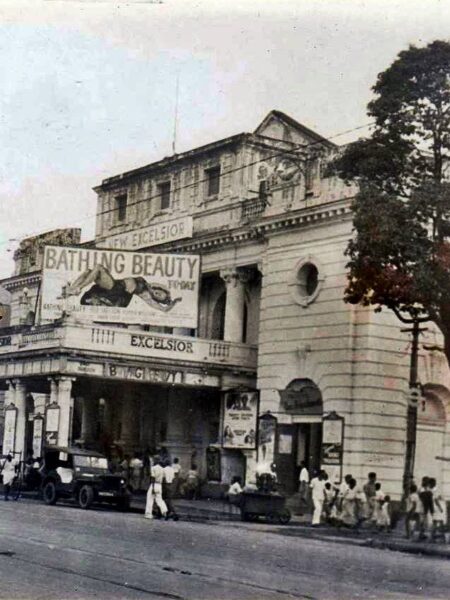
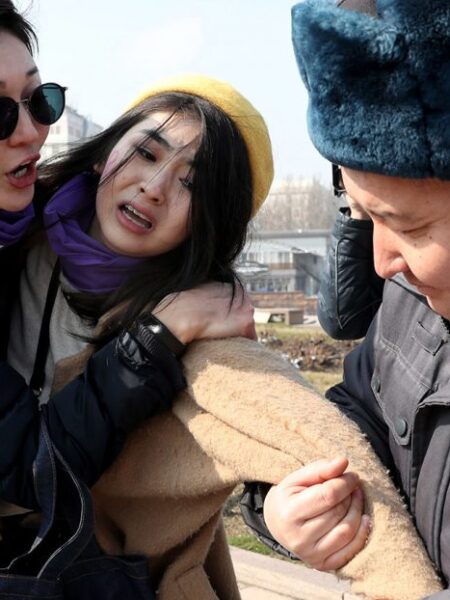
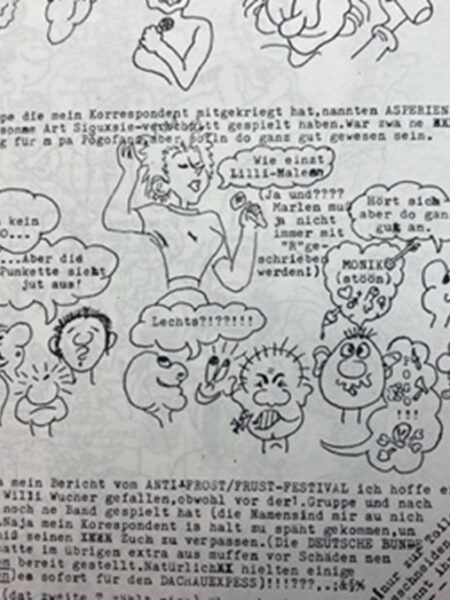

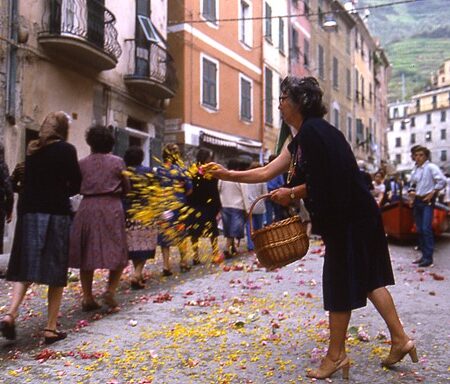

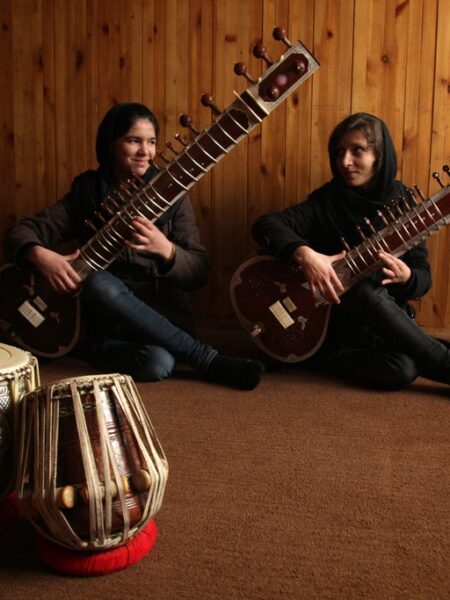
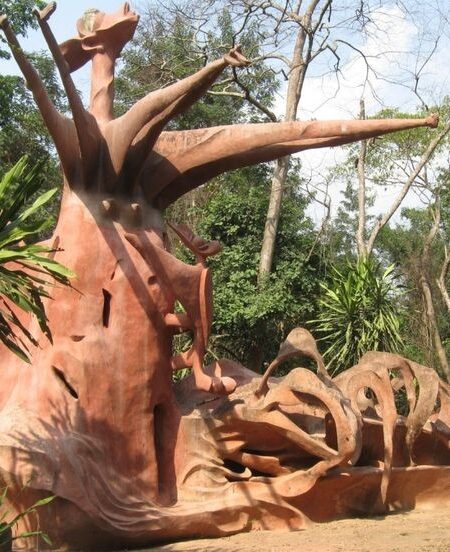
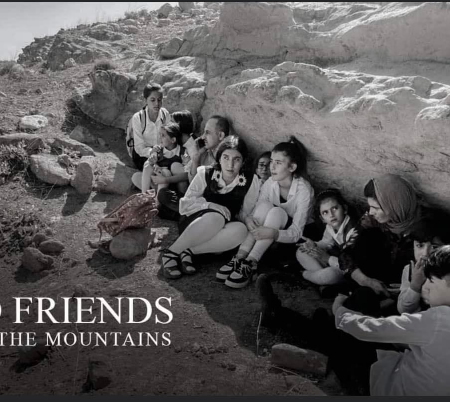
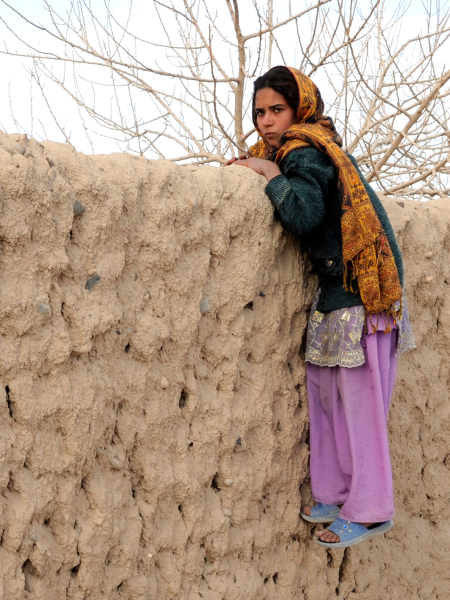


Khanume Farajipoor,
Thank you for the great research I sight. You walk on fascinating paths, in my opinion. Design-weise: Impressive, how everything is embedded here in the website.
As anthropologist I would rather prefer the frog perspective than calling your qualitative work a distancing “satellite image”. But maybe that’s word picking detailism.
You are introducing the topic really really well.
I find your way of writing scientifically very clear. I like it. It’s not self-loving bullshit expressions screamed down from the ivory tower in Rome. It’s an honest intermediate summary without any final answers, a start of a compelling research in which the “I” and “me” of the researcher is visible.
Thanks again.
Greetings from Southern Germany!